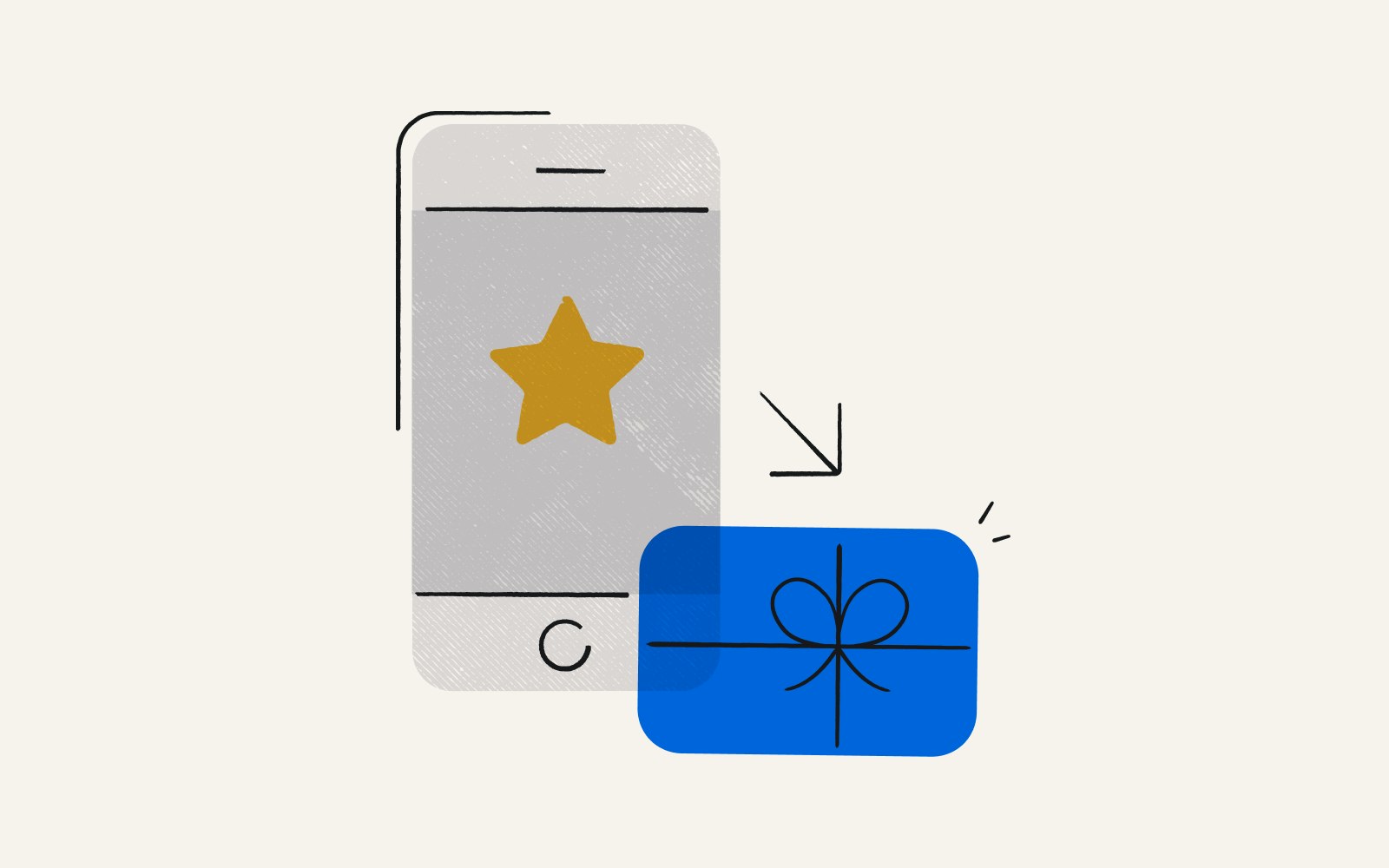Do loyalty programs really work? What the research says
By Laura Ojeda Melchor●7 min. read●Aug 12, 2025

From Anthropologie to Zappos, it seems like every B2C brand has a loyalty rewards program.
But before you invest time and money into starting your own, it’s worth asking: do loyalty programs work? Do they actually boost customer loyalty, retention, and spending?
We pored over the research to find out. This article explores the findings and the pros and cons of loyalty programs to help you decide if you should launch one for your brand.
What is a loyalty program?
A loyalty program is a consumer marketing strategy that gives customers rewards for making repeat purchases. The goal is to incentivize engagement, build relationships with customers, and keep them coming back over time.
Brands offer loyalty programs to boost customer retention, loyalty, and spending, and to gather useful behavioral and demographic data.
Just how popular are loyalty rewards programs? According to a PYMNTS study, 79% of consumers participate in at least one loyalty program, subscription, or membership.
How do loyalty programs work?
Loyalty programs aren't all alike, especially from one industry or brand to another. But they often follow a similar structure.
Here’s how loyalty programs work.
Signup: Customers join the program by enrolling online, in-store, or on a mobile app. Usually, they provide basic information like their name, email, and/or phone number. There’s usually a reward or immediate incentive for signing up
Earning rewards: Once customers sign up for in a loyalty program, they start earning points, credits, or other incentives for taking specific actions. Not all loyalty programs are points-based, though. Paid loyalty programs often offer ongoing benefits like discounts or free shipping.
Tracking activity: Once customers start earning points and rewards, the program should automatically track their activity and rewards. It should also be easy for members to see their progress as they work to earn their next incentive.
Redeeming rewards: As customers keep engaging with a loyalty program, they’ll hit new milestones, like unlocking a VIP tier or earning bonus perks. Brands often offer status levels or tiers that reward customers for their loyalty over time.
Driving engagement: Rewards programs need more than a set-it-and-forget-it approach. The average person is signed up for 19 loyalty programs, according to the 2024 Bond Loyalty Report. Personalized reminders, special offers, gamified points offers, and other bonuses can keep program members engaged with your program over time.
Optimizing your program: Behind the scenes, brands can use data from loyalty programs to understand their customers’ behavior. What do people buy? How often do they engage? Which rewards drive the most action? These insights can help you fine-tune your audience segmentation and deliver more meaningful, well-timed offers.
Types of loyalty programs
There’s no one-size-fits-all loyalty program model. Brands choose the loyalty structure that fits their customers, products, and goals. Here are the most common types:
Points-based: Members earn points for purchases or actions and redeem them for rewards. (Think: Starbucks, Sephora.)
Tiered: Customers unlock new benefits as they spend more or engage more often. (Think: airline status levels or Sephora’s VIB/Rouge tiers.)
Cashback: A simple give-back model—spend money, get money. Often, a percentage of each purchase is returned as cash, credit, or store cash.
Paid (or premium): Customers pay a fee to access ongoing perks like discounts, free shipping, or exclusive content. (Examples: Amazon Prime, REI Co-op.)
Punchcard/visit-based: Common in local businesses: buy X, get one free. It’s simple and effective for high-frequency purchases.
Coalition or partner programs: Multiple brands team up so customers can earn and redeem across an entire, related network of companies. (Think airline miles used on rental cars or hotels.)
The key is to choose a structure that matches how your customers shop and makes it easy for them to feel rewarded.
Loyalty program pros and cons
Loyalty programs have the power to boost sales and customer loyalty, but they can be costly to implement and manage. Let’s examine the pros and cons of rewards programs in detail.
Pro: Increased sales
Loyalty programs encourage customers to spend more money, which can translate into more sales for your brand.
For example, members of Prime, Amazon's paid loyalty program, spend 2x as much on the e-commerce giant's website as non-members.
In a different study, McKinsey found that the chances of shoppers spending more money on a brand are 60% higher after they’ve subscribed to its paid loyalty program. When it’s an unpaid loyalty program, however, that number is only 30%.
These results captured post-membership purchasing behavior, indicating that loyalty programs do encourage members to spend more. Paid programs in particular have an even greater effect.
Pro: Improved customer retention
One report found that 85% of shoppers are more likely to keep buying from brands that have loyalty programs, but only if they feel cared for as customers.
Also, ubiquitously available perks like free shipping aren’t viewed as special anymore. In 2026, people want personalized deals and discounts.
Pro: Stronger customer loyalty
Top-performing loyalty programs create an average 46% loyalty rate. That means 46% of members said that joining the loyalty program caused them to never consider other brands.
In a survey of online shoppers, 51% said they made a decision about where to buy based on a loyalty program offer.
Pro: Higher customer lifetime value
Customer lifetime value (CLV) measures how much a customer will buy from your business over their lifetime. You can calculate CLV as follows:
Customer Lifetime Value = Customer Value × Average Customer Lifespan
Because loyalty program members spend more and stick around longer than non-members, loyalty programs are a great way to boost CLV. One report found that the CLV of customers who spend points within a loyalty program is 6.3x higher than that of non-members.
Pro: Gather valuable customer data
When a customer signs up for your loyalty program, you get their contact info and access to precious demographic and behavioral data, including what they buy and how often. From there, you can send targeted and personalized offers that help drive additional purchases.
Con: They cost money
Unless you’re using old-fashioned physical punch cards (which are hard to track and administer), building the infrastructure to manage a digital rewards program is an investment. When thinking about the costs of a loyalty program, consider three factors:
Technology costs: You’ll need a digital platform to create and manage accounts for all the customers who join your rewards program. Developing the technology in-house is pricey. That said, using a SaaS solution is less expensive and typically has a shorter launch timeline.
Marketing costs: This includes email marketing, graphics, and advertisements to ensure customers know about your program.
Maintenance costs: Keeping your program running means paying for tech maintenance, paying people to manage the program, and of course, paying out the loyalty program’s benefits.
The good news? According to a 2024 report, 89.6% of loyalty programs achieve a positive ROI and generate 4.8x more revenue than they cost.
Con: Increased buyer power
Buyer power refers to the influence consumers have over brands to drive lower prices and improve products. More buyer power is a pro for consumers, but it can be a con for brands that may feel at the whim of their loyalty program members.
Case in point: In September 2023, Delta Airlines announced major changes to its SkyMiles frequent flyer program. It faced so much backlash from members that by October, it rolled back several of those changes.
Con: Lower profit margins
Part of running a loyalty program that works is striking the right balance between offering rewards that entice loyalty program members to spend more and maintain program profitability.
This can be a challenging tightrope to walk, and brands that miscalculate often end up losing money.
Take Target Circle, for example. The brand used to offer 1% back on all purchases. Shoppers could buy $100 worth of decor, household supplies, and groceries and watch in glee as a dollar landed in their Target Rewards account. But in April 2024, the company quietly got rid of this program feature. Profit margin-wise, the loyalty reward program wasn’t working.
While the company framed the change as a positive one, consumers weren’t happy with the update. took to Reddit to vent. The key takeaway: If you create a loyalty program that benefits customers, be upfront about any changes you make.
Calculating the ROI of loyalty programs in 2026
These five easy steps will help you calculate how much return on investment you can expect from your loyalty program.
Measure incremental revenue. Compare the spending behavior of loyalty members against a control group. Try using A/B tests or geographic trends to isolate the program’s true impact on sales.
Track key metrics. Focus on customer lifetime value, purchase frequency, average order value, redemption rates, churn, and NPS.
Include full program costs. Include expenses for rewards, tech platforms, marketing, admin, and fraud monitoring.
Calculate ROI. Use this formula: ROI (%) = ((Incremental Revenue – Program Costs) / (Program Costs × 100)
Factor in broader value. Loyalty programs deliver more than short-term revenue. They also drive first-party insights, personalization, and brand advocacy. Forrester and EY highlight that these longer-term returns are often the ones that make the most impact.
The value of loyalty programs in 2026
Unsure whether a loyalty program will work for your brand? The data shows that these programs are still driving value in 2026:
72% of consumers purchase more often from brands when enrolled in their loyalty programs.
Loyalty program members contribute a 12-18% increase in annual revenue growth.
43% of consumers reported joining a new brand’s loyalty program in the past year.
36% of consumers feel significantly more brand loyalty when they receive a personalized experience (and 46% are somewhat influenced).
This year, companies are making engagement a priority to deliver even more value to customers. Two of the top strategies brands are using to drive loyalty program engagement are:
Adding gamified elements into rewards programs. Starbucks offers members-only games with prizes like free drinks and food. With Sephora, Beauty Insiders can earn bonus points through limited-time Challenges.
Delivering personalized services for each loyalty member. Adidas’ AdiClub lets members curate relevant content about favorite sports and fashion trends in their app and inbox. Chipotle uses CRM data to connect more deeply with its Chipotle Rewards members and take them on personalized food journeys.
Brands that prioritize these strategies are doing two key things: driving engagement and building loyalty that lasts well beyond the next transaction.
How to make loyalty programs work for you
The research shows that loyalty programs work when planned and executed strategically. Rewards programs can increase customer retention, foster customer loyalty, and boost your bottom line.
In 2026, they’re a perfect opportunity to strengthen the relationship between your brand and your customers.
Keep these tips in mind when planning your brand’s customer loyalty program:
Choose the right rewards. Remember, non-monetary rewards are the least likely to boost customer retention. If you can, opt for rebates, discounts, and gift cards to entice customers to keep coming back for more. Conduct a thorough analysis of your customers or survey them to find out which rewards best align with their values and buying habits.
Start small. Because building a loyalty program requires a large upfront investment, start small with a trial period involving your top buyers. If it’s successful and profitable, expand and scale up from there.
Track the metrics (and watch profit margins closely). Monitor key stats like CLV, average order value, and incremental revenue to see how your loyalty program impacts sales. An effective and profitable program should motivate members to spend more than they would have without the program.
Scale back if necessary. The economy is constantly in flux, and consumer behavior is, too. If your loyalty program starts to become unsustainable, adjust the rewards you offer or the spending amount needed to get certain benefits. Communicate any changes to your program members with ample lead time.


